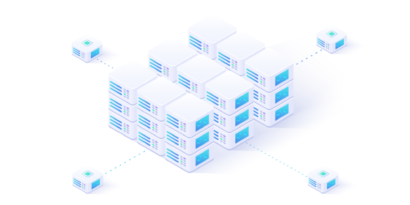
The wider an organization’s activities, the more data it processes. Over the years, their number begins to increase, and their effective processing by humans becomes almost impossible. The enormous amount of information – both current and historical – hides a lot of valuable tips that allow you to make good business decisions. However, you need a good management system. The best solution is a data warehouse. See what database warehouse architecture is possible to implement and what to choose.
What is a Database Warehouse?
To understand what a database warehouse architecture is, it is worth first explaining what a data warehouse itself is. It is much more than an “ordinary” base. It is an advanced data management system. Its purpose is to enable BI activities related to advanced business analytics. Its tasks include:
- obtaining data, usually from many different sources,
- data transformation – to make them coherent,
- loading transformed data – so that they can be used,
- providing analytical information – is the key decision-making knowledge for the organization.
Data Vaults are only responsible for querying and analyzing such precise specialization is necessary for them to be able to quickly process both current data and the enormity of historical data from all departments of the organization. They mainly come from enterprise resource planning systems, accounting and financial systems, CRM software, production and warehouse systems and many others – depending on the specificity of the company’s activity. It can be said that data warehouses are a Big Data solution.
Database warehouses:
- collect and consolidate huge amounts of information from many different sources – so that they can be collated, compared and searched for specific regularities,
- they provide great analytical opportunities – both for employees who specialize in data analytics and strictly business analytics, which allows you to make informed investment decisions with low investment risk.
What does a typical database warehouse consist of?
The architecture of the database warehouse and the entire system are very advanced and comprehensive. This solution consists of elements such as:
- relational database – it is the basis of the entire system and a way to unify information from many sources,
- a system that allows you to prepare data for analysis, which will enable their extraction, loading and transformation,
- data reporting and statistical analysis functions,
- tools that enable the processing of data into a visualization for presentation purposes.
For Business Intelligence purposes, a data warehouse may also have advanced analytical applications that use artificial intelligence.

What is a database warehouse architecture?
The architecture of the database warehouse is a way of “arranging” them in the system – so that later you can easily gain access to them, and also be able to process them in an advanced way. Since database warehousing is a solution that has been used for a long time (the first concept developed by Bill Inmon appeared in 1992), the Data Vault architecture also underwent transformation and modernization. Therefore, several models are currently available. The selection of the appropriate one depends on the amount of data to be transformed, the purposes for which it is to serve, as well as the technological and financial possibilities.
In general, the data warehouse architecture consists of subsequent layers. Please note that each subsequent one is “powered” from the previous one:
- the lowest layer is usually composed of dispersed sources of information of various kinds – this group includes various relational databases, spreadsheets, XML files, text files, and even various recordings. They can be extremely diverse, therefore analyzing them requires processing,
- the middle layer is the so-called central data warehouse – it is a space where processed information obtained earlier is stored. They are aggregated and therefore partially summed up. This section of the data warehouse is constantly fed with new information – it can be updated on a daily basis;
- the next layer consists of thematic warehouses that contain data processed for the needs of individual departments of the company. Such thematic wholesalers are part of the entire database and allow for more accurate processing and analysis,
- an optional layer in the database warehouse architecture is the operational data warehouse – it is a buffer in which information is pre-processed, often even in real time. Its creation relieves the central warehouse and provides smoother access to data.
It is worth knowing that there are various models of data warehouse architecture, and the implementation of a specific solution depends on the specific needs and technical capabilities.

Data warehouse architecture types
There are several different subcategories of data warehouse architecture. One of them covers architecture:
- simple – a system in which all thematic wholesalers have a similar structure. Metadata has raw data that ends up in a central repository. It is where analytical and reporting processes as well as exploration take place;
- simple with staging area – in this model, the data, before it goes to the central repository is processed and cleaned in the operational data warehouse. Its introduction optimizes the smooth operation of the warehouse,
Hub and Spoke model – database warehouse architecture in which the thematic data elements are added between the central repository and end users. Their presence gives greater opportunities to conduct analytics in a narrower sense, only related to the exploitation of production resources or financial results; - isolated areas (Sandbox) – they are separate parts of the data warehouse, which are secured and allow for informal and very safe processing of selected data, without following the protocols in force in the entire management system.
The first three types of architecture can also be named differently. In IT terminology, these are:
- centralized (simple) architecture – its great advantages are ease of creation and administration, as well as simplification of access to information. However, it must be remembered that it has a relatively low efficiency, especially with a large amount of information,
- federated architecture – this is the one in which operational data warehouses as well as thematic warehouses are pre-applied. It is more complex, but also much more scalable, more fault-tolerant, and faster than centralized;
- multi-layer architecture is one in which the central warehouse is supplemented by subsequent layers of thematic warehouses. Each of them contains a copy of the previous layer’s data, or at least a summary of it. The use of such technology maximizes data security and ensures excellent performance.
- It is worth remembering that when implementing a data warehouse, you can choose a model based on a relational database, as well as a multidimensional MDDB database. Therefore, you can also divide the architecture into ROLAP and MOLAP.
The selection of the right database architecture should be the result of cooperation with specialists who will thoroughly verify the needs of a given organization and select the technologies that best suit them. Therefore, it is worth starting cooperation with specialists in this area – in order to gain the greatest possible support for BI.
Do you have any questions or are you looking for the perfect solution for your company?
Schedule a free consultation. Consult your company needs with our experts. Learn about solutions that will help your company improve business processes and ensure data security.
 WhatsApp
WhatsApp



